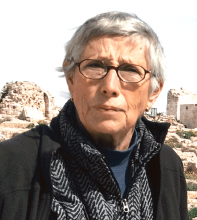You are here
Israel’s misguided wars
Jul 16,2014 - Last updated at Jul 16,2014
While Israel stepped up its latest assault on Gaza, Lebanese marked the eighth anniversary of Israel’s 2006 war on their country. This onslaught killed 1,100, wounded thousands, and drove a million from their homes. Video and photographic images from both conflicts are interchangeable: the floors of apartment blocks pancaked, walls sheared off with the contents of rooms exposed, people scrambling to rescue their loved ones after an Israeli air strike (“We don’t target civilians,” say Israeli spokespersons), people fleeing their hometowns and villages with a few possessions, hospital wards where children lie listlessly in their beds where beds are available.
These sickening scenes are repeated every few years, making headlines for a few days but having diminishing impact on war-jaded world public opinion. Gaza and Lebanon are Israel’s favourite targets. Gaza has always been the cockpit of Palestinian resistance to Israel and Lebanon because it is Lebanon, a chaotic multi-confessional quasi-democracy that challenges Israel’s religious state model.
Israel’s latest pretexts for attack are Hamas and Hizbollah. Both are, to a certain extent, creations of Israel that have become major antagonists. Founded in late 1987 in the early days of the first Palestinian Intifada, Hamas was, initially, covertly backed by Israel, then contending with a spontaneous mass uprising orchestrated but not controlled by Fateh. I recall walking down Salaheddin Street in East Jerusalem with a Palestinian friend who pointed out that the Israeli police ignored Hamas leaflets tucked under the windshield wipers of cars while any Fateh literature was promptly snatched and destroyed. A Gazan human rights activist who spent time in an Israeli prison for Intifada activity told me that during the first few months of the Intifada there were few Hamas people in jail. They were detained later when Israel realised they were a serious threat rather than a tool to use against Fateh and a means to divide Palestinians. Hamas became an even more serious threat when it won the democratic Palestinian legislative election in January 2006 and took over the Gaza Strip in June 2007, driving Fateh’s corrupt leadership from Gaza. Hizbollah emerged in 1982 after Israel invaded and occupied Lebanon from its southern border to west Beirut. If Israeli defence minister at the time, Ariel Sharon, had stuck to his declared plan of clearing Palestinian forces from a wide band of territory north of the frontier, there might have been no Hizbollah, which grew into the most dedicated and efficient fighting force the Israeli army has ever had to fight. But Sharon had his own agenda, which he did not share with then-Israeli prime minister Menachem Begin, and, as was Sharon’s wont, he conquered half of Lebanon and alienated the southern Shiites who suffered under the Israeli occupation. Originally recruited, funded, trained and armed by Iran, Hizbollah has not only become Israel’s main regional enemy and challenger but also a key democratic political player on the Lebanese scene.
It is significant that Hizbollah forced Israel to withdraw from its “security zone” on the Lebanese side of the frontier in 2000 while Israel pulled its colonists and soldiers out of Gaza in 2005, at a time Hamas’ star was rising in both Gaza and the West Bank. Both withdrawals humiliated Israel and created a desire to seek vengeance in its politico-military establishment which remains determined to reassert both Israel’s deterrence and hegemony.
Hamas and Hizbollah prevent Israel from achieving these objectives. Neither is deterred by Israel’s overwhelming military superiority and its use of a vast arsenal of bombs, shells and mortars against civilians. In 2006, Hizbollah’s armed wing actually drove Israeli tanks and troops out of Lebanon while Hizbollah rockets landed in northern Israel. In 2008- 09 Hamas forces stood and fought Israeli troops as they invaded Gaza and Hamas missiles continued to land in Israel until a ceasefire was proclaimed.
Thanks to the US-driven “war on terror,” Hamas and Hizbollah have been declared “terrorist” organisations, enabling Israel to assault, at will, Palestinian and Lebanese civilians and Hamas and Hizbollah fighters.
But international patience with Israel is wearing thin, particularly since US Secretary of State John Kerry has made it clear that Israel’s refusal to halt colonisation activity in the West Bank and East Jerusalem scuppered his mission to broker a deal to end the Palestinian-Israeli conflict by means of the “two state” solution.
Israel is using its ongoing assault on Gaza to distract attention from the dismal failure of the Kerry initiative. Israel also hopes the campaign against Hamas will compel the Palestinian Authority and its President Mahmoud Abbas to put an end to the government of national unity and, once again, isolate Hamas and Gaza. But the attack on Gaza makes this politically impossible for Abbas who has been sidelined and undermined by Israel’s actions.
Israel has also made use of the “terrorist” label to conduct air raids against weapons depots in Syria, claiming that arms from these sites are being smuggled into Lebanon for Hizbollah. This is a curious claim because the Syrian army, fighting a war against assorted Sunni fundamentalist and jihadi groups, needs every gun, mortar and rocket in its arsenals.
Israel may, eventually however, come to the belated realisation that the fundamentalists and jihadists operating in Syria are far worse antagonists than Hizbollah and it is better to stick with an enemy one knows than a collection of enemies whose actions cannot be predicted. This is true also in Gaza: Hamas is a more reliable enemy than Islamic Jihad and the radical fundamentalists.













